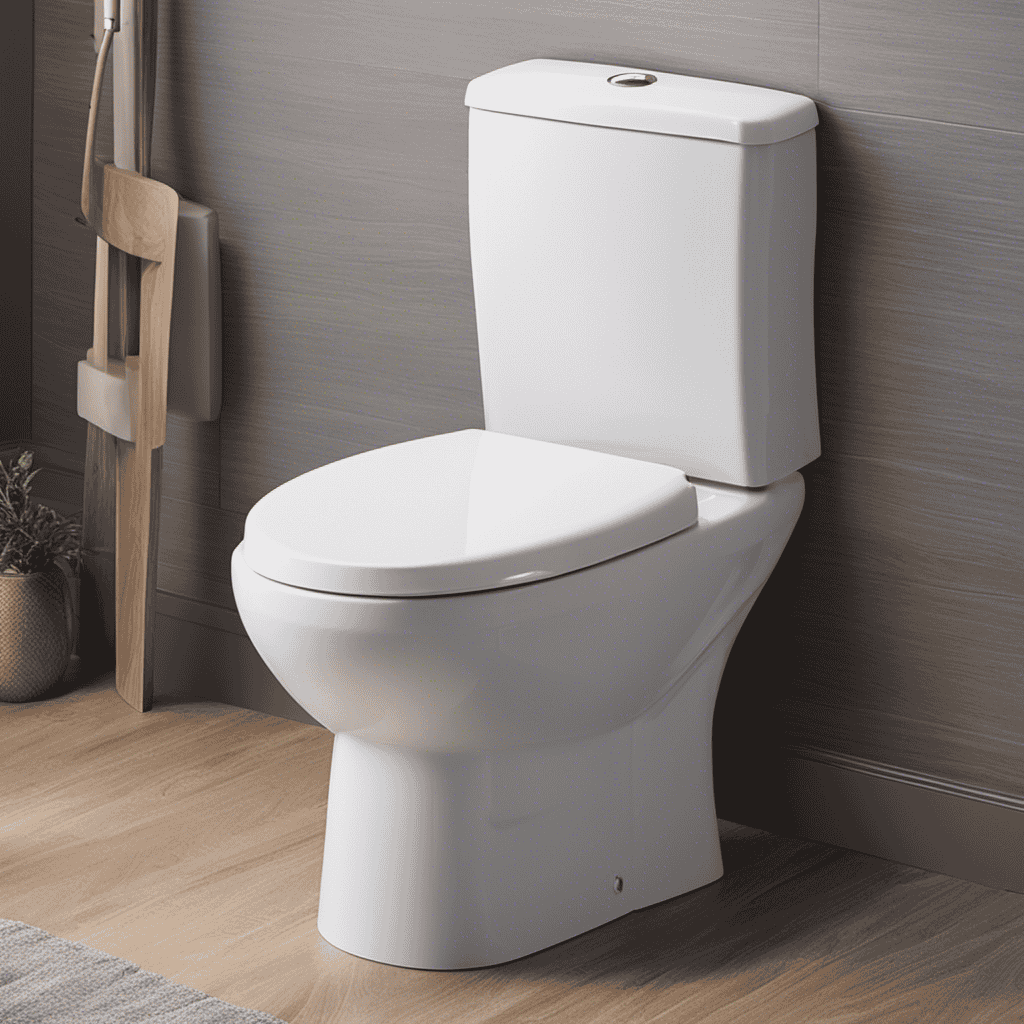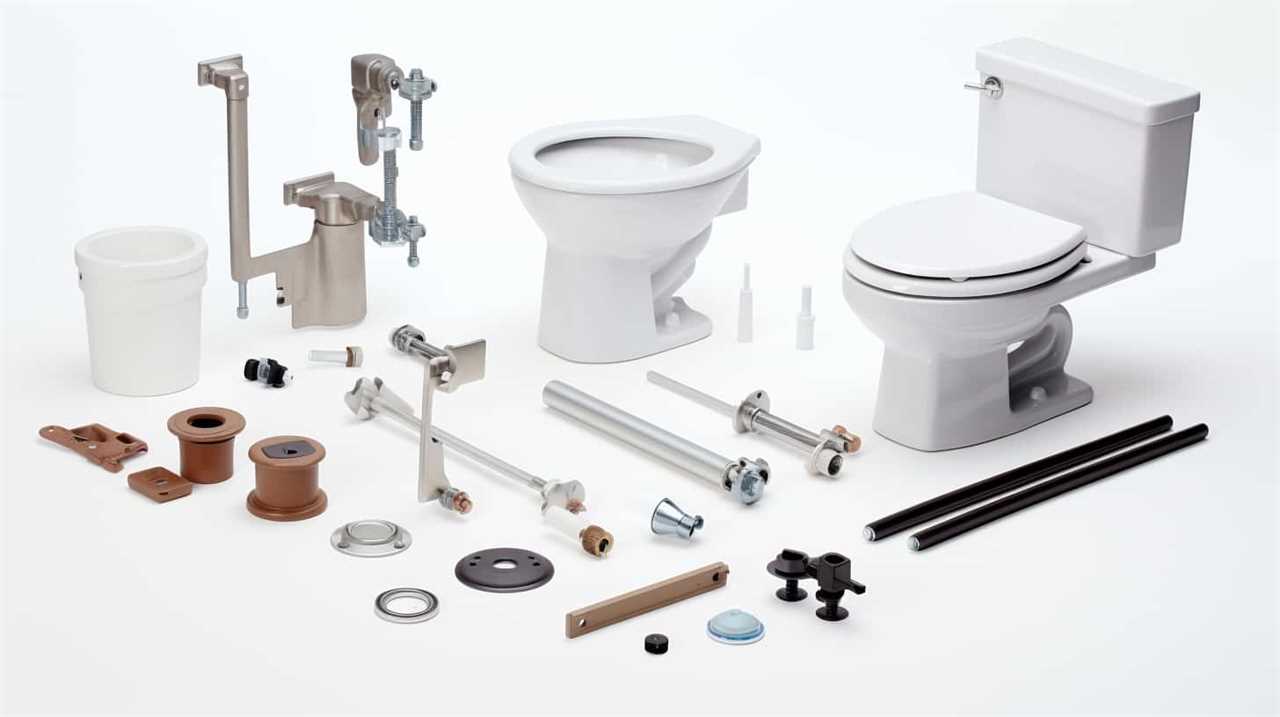Have you ever wondered how long a toilet wax ring lasts?
Well, imagine this scenario: you just installed a new wax ring in your toilet, and everything seems perfect. But as time goes on, you start noticing a foul odor and water seeping onto the floor. These are telltale signs that your wax ring is deteriorating.
In this article, we will explore the average lifespan of a toilet wax ring, factors that affect its longevity, and how to extend its lifespan.
So, let’s dive in and learn how to keep your bathroom dry and odor-free!
Key Takeaways
- Quality of installation and proper alignment of toilet to flange are crucial for wax ring longevity
- Foul odors, water pooling, and sewage gases indicate a faulty wax ring
- Regular maintenance, such as inspecting for cracks and leaks, can extend the lifespan of a wax ring
- Replacing a faulty wax ring is important to prevent water damage and maintain proper toilet functioning
Factors Affecting Wax Ring Lifespan
One of the factors that can affect how long your toilet wax ring lasts is the quality of installation. Proper installation is crucial for ensuring the optimal performance of the wax ring.
Several factors can impact the performance of the wax ring, including the alignment of the toilet to the flange, the tightness of the bolts, and the amount of pressure applied during installation. If any of these factors are not properly addressed, it can lead to a faulty wax ring and potential leaks.
Signs of a faulty wax ring include water pooling around the base of the toilet, foul odors, and loosening of the toilet. These signs indicate that the wax ring may need to be replaced to prevent further damage.
Common Signs of a Deteriorating Wax Ring
If you notice any foul odors or water pooling around the base of your toilet, it’s a sign that your wax ring may be deteriorating. These warning signs indicate that the wax ring, which forms a watertight seal between the toilet flange and the toilet base, is no longer functioning properly.
As a result, sewage gases can escape, leading to unpleasant odors, and water may leak onto the floor, causing damage. To troubleshoot this issue, you can try tightening the toilet bolts to ensure a snug fit, or replacing the wax ring altogether.
When replacing the wax ring, make sure to choose a high-quality one that is specifically designed for toilets. Regularly inspecting and maintaining your toilet’s wax ring can help prevent costly water damage and ensure efficient operation.
Average Lifespan of a Toilet Wax Ring
The durability of a wax ring is an important aspect to consider when discussing toilet maintenance. Understanding the average lifespan of a wax ring will help you determine how frequently it needs to be replaced.
In this discussion, we will explore the factors that contribute to wax ring durability and replacement frequency.
Wax Ring Durability
Wax rings typically last around 10 years before needing to be replaced. To ensure the longevity of your wax ring, regular maintenance is crucial.
You should periodically inspect the wax ring for signs of damage or wear. Look for any cracks, breaks, or deformities in the ring. Additionally, check for leaks around the toilet base or any water stains on the floor. These can indicate a faulty wax ring. If you notice any of these signs, it is important to promptly replace the wax ring to prevent water damage and potential plumbing issues.
Regularly cleaning the toilet and avoiding the use of harsh chemicals can also help extend the lifespan of the wax ring.
Replacement Frequency
Regularly inspecting your toilet for signs of damage or wear is crucial to determine when you should replace the wax ring. While wax rings are generally durable and can last for several years, they may require more frequent replacements in certain situations. Factors such as heavy usage, improper installation, or water leakage can contribute to the degradation of the wax ring.
If you notice any of the following signs, it is advisable to replace the wax ring:
- Water leakage around the base of the toilet.
- Foul odors coming from the bathroom.
- Loose or wobbly toilet.
- Visible cracks or damage to the wax ring.
- Stains or discoloration on the floor around the toilet.
When it comes to alternative options, there are some newer products in the market, such as rubber gaskets or wax-free seals, that claim to offer longer-lasting and more reliable solutions. However, it is important to evaluate these options carefully and consult with a professional plumber to ensure compatibility with your specific toilet model.
How to Extend the Lifespan of a Wax Ring
To ensure the longevity of your toilet wax ring, it is crucial to follow proper installation techniques.
This includes ensuring a tight seal between the toilet base and the wax ring, as well as aligning the toilet properly on the flange.
Additionally, regular maintenance is key in extending the lifespan of the wax ring.
This involves checking for leaks, tightening bolts, and avoiding the use of harsh chemicals that can deteriorate the wax ring.
Proper Installation Techniques
When properly installed, toilet wax rings typically last for several years. However, if you’re looking for alternatives to traditional wax rings or experiencing installation issues, here are some troubleshooting tips to consider:
-
Use a wax-free toilet seal: These seals are made of rubber or foam and provide a reliable and long-lasting alternative to wax rings. They are also easier to install and remove.
-
Check the flange: Ensure that the flange is securely attached to the floor and level with the finished flooring. If it is damaged or not properly aligned, it can cause leaks and shorten the lifespan of the wax ring.
-
Apply even pressure: When installing the toilet, make sure to apply even pressure to the bowl to create a tight seal. Avoid rocking or pushing down on one side, as this can cause the wax ring to deform or break.
-
Inspect for leaks: After installation, check for any signs of leaks around the base of the toilet. If you notice water pooling or a foul odor, it may indicate an issue with the wax ring that needs to be addressed promptly.
Regular Maintenance Tips
Make sure you regularly inspect the base of your toilet for any signs of leaks or damage. Regular maintenance is crucial to keep your toilet functioning properly and avoid costly repairs.
Start by checking the wax ring, which is the seal between the toilet and the floor. Look for any cracks, gaps, or water stains around the base. If you notice any issues, it may be necessary to replace the wax ring.
Additionally, keep an eye on the water level in the tank and ensure it is not overflowing or running continuously. If you experience a weak flush or clogging, try using a plunger to clear any obstructions.
When to Replace a Toilet Wax Ring
You should replace a toilet wax ring if you notice any water leakage around the base of the toilet. Signs of a faulty wax ring include puddles of water forming around the toilet, a foul odor coming from the bathroom, or the toilet wobbling.
To help you understand why replacing the wax ring is necessary, here are four key points:
-
Prevent water damage: A faulty wax ring can lead to water leaking onto the bathroom floor, causing damage to the subfloor and potentially creating an environment for mold and mildew growth.
-
Eliminate unpleasant odors: A damaged wax ring can allow sewer gases to escape, resulting in unpleasant odors in your bathroom.
-
Ensure a stable toilet: A worn-out wax ring can cause the toilet to become unstable, leading to wobbling or rocking when you sit on it.
-
Maintain hygiene: A properly installed wax ring creates a watertight seal, preventing any sewage or bacteria from seeping out.
Now that you understand the importance of replacing a faulty wax ring, let’s move on to the steps for properly installing a new wax ring.
Steps for Properly Installing a New Wax Ring
To properly install a new wax ring, it’s important to first remove the old wax residue from the toilet flange. This step ensures a clean and secure connection between the toilet and the sewer pipe.
Here are the steps for a proper wax ring installation:
- Turn off the water supply to the toilet and flush it to empty the tank.
- Disconnect the water supply line and remove the toilet by unscrewing the bolts.
- Scrape off any remaining wax residue from the toilet flange using a putty knife.
- Inspect the flange for any damage or cracks. Replace if necessary.
- Place the new wax ring on the flange, making sure it is centered and level.
Conclusion
Congratulations! Now you know the astonishing truth about toilet wax rings. These little wonders can last for ages, defying the laws of time and wear.
With proper care and maintenance, your wax ring can outlive even the most durable of toilets. So fear not, dear reader, for your bathroom will forever be protected by the invincible wax ring.
Embrace this incredible technology and bid farewell to toilet leaks and odors.
Long live the mighty wax ring!










